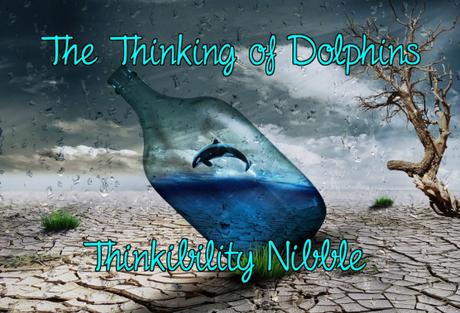
Is this an example of creative thinking? And does this mean that dolphins can think? If yes, can other animals think?
“When given the hand signal to “innovate,” Hector and Han know to dip below the surface and blow a bubble, or vault out of the water, or dive down to the ocean floor, or perform any of the dozen or so other maneuvers in their repertoire—but not to repeat anything they’ve already done during that session. Incredibly, they usually understand that they’re supposed to keep trying some new behavior each session.
Bolton presses her palms together over her head, the signal to innovate, and then puts her fists together, the sign for “tandem.” With those two gestures, she has instructed the dolphins to show her a behavior she hasn’t seen during this session and to do it in unison.” National Geographic
As a result of our challenge (see this post) to pose a question Google could not answer we typed: ”Can animals think?” into our search engines.
Regular readers of this blog may have noted that we believe that thinking is an interactive process between the body and the surrounding. We disagree with the intuitive idea – in our opinion – that thinking takes place somewhere in the body, mostly assumed to be in our brains.
Diving deeper in this assumption, it seems logical to assume that thinking is evolutionary. The surroundings in which humans have survived have changed dramatically throughout centuries. Do animals also show signs of thinking as they adapt to and survive to changing conditions? Animals will probably do their best thinking when it serves their purposes, not when we ask them to or indeed when we are looking. Do we really know what we are looking for?
We hypothesized that when human interact in different environments, groups of humans think differently.
This could be on explanation to why so many cultures have radical different ways of life. However, it might be that all humans have the same meta-thinking strategy – the way we change our thinking in relation to the environment.
Another assumption is that animals do “think”, but their “thinking” may be different from ours and different species may “think” using different modes and ways of communication. There may also be fundamental differences between the thinking of a gorilla thinks and a sea slug. Today, many scientists believe that some animals have the brain power to understand new situations, make decisions, and plan ahead.
If there is not a fundamental difference in human and animal thinking, but the differences are merely caused by different interactions with the environment, we could test our hypothesis with an animal that lives in radical different circumstances than human.
We made a list of commonalities and differences between human and dolphins that are known for their intelligent and social behavior. National Geography has an insightful article about the Intelligence of Dolphins, go here to read it.
Of course, there are a lot of other difficult questions.
- How do we know that animals or a human think?
- Do humans think in language?
- Do we dream in language?
- Some people who are fluent in more than two languages may think in different languages.They may use different language in different situations. How do bi-lingual or multilingual people know which languages to use to get grip on the world in different situations?
- How do we know that dolphins can think?
- Can they think because they can communicate, coordinate their actions, or swim in new innovations patterns?
To learn more about this subject, use two or more search engines and asked “Can animals think?”
Evaluate the searches and think about if reading the information and ideas have changed your mind. Why has it changed your mind? Or why has it not changed your mind?
Why is this a good question to type into a search engine? Why is it not a good question? Do search engines really have an answer to this question? And what happens if you think they do?
Photo: Comfreak
